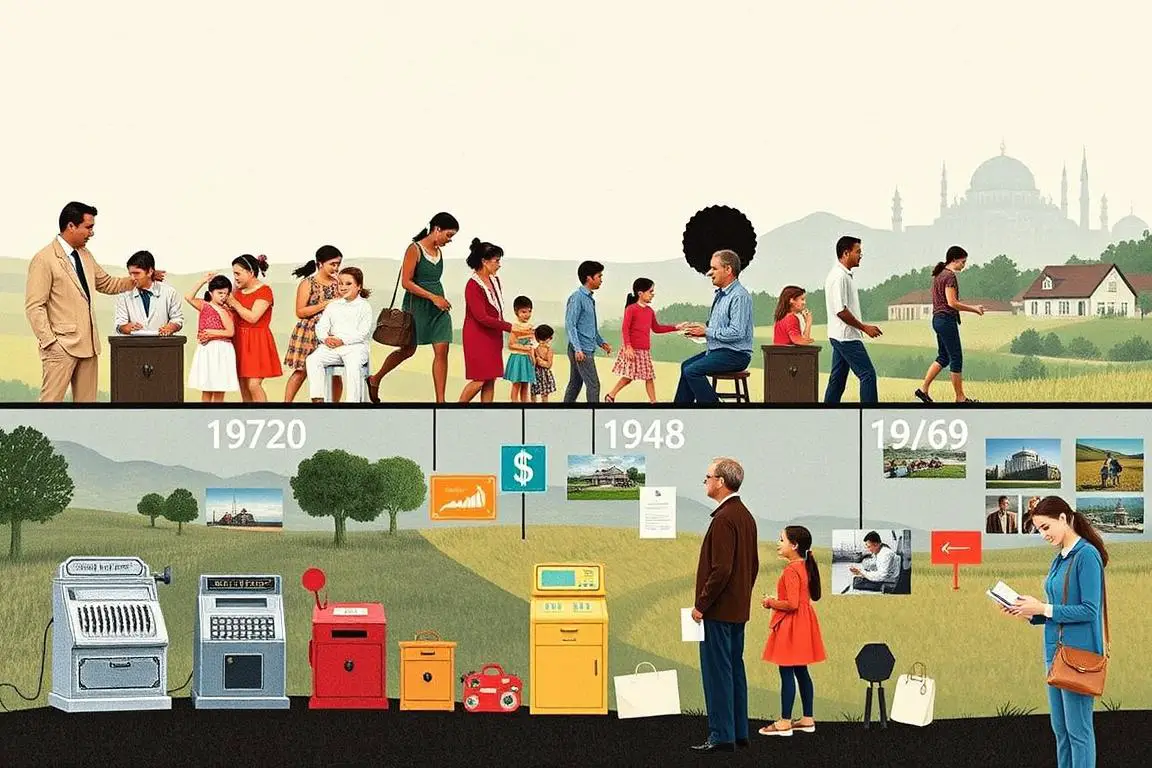Top Financial Assistance Programs Offering Vital Support for Families in Need

Imagine this: you’re in a spot where every dollar matters. The difference between making it and falling into financial trouble is thin. For many Americans, this struggle is real every day. Family financial assistance goes beyond just help; it’s crucial for keeping families running. The Social Security Act of 1935 started this support with the Aid to Families with Dependent Children (AFDC) program. It was a key part of the U.S. safety net for years1.
By the 1990s, big changes were underway. States got the power to try new things with welfare, thanks to Section 1115 of the Social Security Act. They made rules tougher, like more work requirements and time limits. This aimed to help people become self-sufficient1. This shift led to the Temporary Assistance for Needy Families (TANF) program. The laws of 1996 changed how support programs worked, focusing on jobs and giving states flexibility in their programs1.
The move from AFDC to TANF showed a strong commitment to helping families. But now, there was a bigger push for jobs and independence. TANF changed how help was given, with fixed money and strict rules. States now had a lot of say in their programs1. Besides TANF, programs like SNAP, WIC, Medicaid, and the Earned Income Tax Credit also support many Americans. They are all part of a network that gives financial help2.
Key Takeaways
- The evolution from AFDC to TANF represents a significant shift in welfare policy over the last century.
- TANF and other support services play a critical role in offering assistance and promoting job preparation.
- States have a pivotal role in defining the implementation of financial relief programs, with stipulations set by federal guidelines.
- Complementary programs like SNAP, WIC, and Medicaid extend the reach of support beyond cash assistance.
- The focus of modern financial support aims to encourage work participation and self-sufficiency among recipients.
Understanding the Evolution of Financial Support Programs
The landscape of financial support in the U.S. has changed a lot. It now focuses on easing financial stress and improving how families manage their money. It’s interesting to see how shifts from the Aid to Families with Dependent Children (AFDC) to the Temporary Assistance for Needy Families (TANF) program, along with the work between federal and state governments, reveal the current welfare system’s structure.
Transition from AFDC to TANF
The move from AFDC to TANF was a big policy change aimed at cutting reliance on government help. It encouraged work and personal accountability. This was partly due to the Personal Responsibility and Work Opportunity Reconciliation Act of 1996, which replaced AFDC that started in 1935. TANF set up strict work requirements and a cap on how long people can get aid, pushing for more self-reliance among those it helps3.
The Impact of Federal and State Collaboration
The federal and state governments are key in rolling out TANF, with states getting federal money to run their own programs within set rules. This teamwork leads to creative welfare solutions that suit local needs while sticking to national goals to cut poverty. States must keep up a certain level of spending, called the “maintenance of effort,” to get federal funds. This ensures they keep supporting family financial aid systems3.
Stipulations of the Personal Responsibility and Work Opportunity Reconciliation Act
The 1996 Act changed welfare by requiring jobs for aid and setting limits on how long aid can be received. Its goal was to turn welfare into help that doesn’t last forever, encouraging people to work towards being economically independent. The act also demands states to maintain 75 to 80 percent of their 1994 spending to get federal money, pushing for ongoing investment in families’ financial health3.
This change in programs shows continuous efforts to find the right mix of giving aid and fostering self-sufficiency. To dive deeper into the changes in these policies, check out this overview of federal and state welfare initiatives.
| Year | Program | Participants |
|---|---|---|
| 1974 | Food Stamp Program | 18.5 million |
| 1976 | Food Stamp Program Peak | 18.5 million |
| 1977 | Food and Agriculture Act | Reforms focusing on access |
Financial Relief for Families: Varied Assistance Options
To help families stay financially stable, many programs offer support. For example, TANF provides cash help to low-income families for a set time. Also, WIC helps new mothers and babies with food and tips for a healthy start. All these efforts aim to protect our nation’s most vulnerable4. LIHEAP is another program that helps with home energy bills. It ensures families don’t struggle with the cost of keeping their homes warm or cool4.
SNAP is crucial for families needing food assistance. It works with states and local groups to ease the burden of buying food4. Programs that offer free or reduced-price school meals are essential too. They make sure kids get the nutrition they need to learn and grow healthy4. For children with disabilities, SSI for Children provides money to help them live better lives despite their challenges4.
Different relief programs are constantly being improved to better serve families. By 2024, TANF benefits will increase to reflect changing economic needs5. The SSI program will give more money each month to help individuals and couples. This shows a commitment to keeping people supported during tough times5. The Pell Grant is also increasing which will help students afford college. This boost helps students focus on studies rather than money worries5. These updates show a strong community and government commitment to family, education, and society’s well-being.
FAQ
What top financial assistance programs are available to support families in need?
How have financial support programs evolved over time?
What impact does federal and state collaboration have on financial assistance programs?
What are the key stipulations of the Personal Responsibility and Work Opportunity Reconciliation Act?
Are there specific financial support programs for unique family situations?
How can families manage their budgets to better handle financial stress?
Where can families find more information about financial relief options?
Can families facing temporary hardships receive immediate financial assistance?
Source Links
- Aid to Families with Dependent Children (AFDC) and Temporary Assistance for Needy Families (TANF) – Overview – https://aspe.hhs.gov/aid-families-dependent-children-afdc-temporary-assistance-needy-families-tanf-overview
- No title found – https://blog.healthsherpa.com/top-10-government-programs-for-low-income-families/
- Aid to Families with Dependent Children – https://en.wikipedia.org/wiki/Aid_to_Families_with_Dependent_Children
- Financial Assistance for Families | Childcare.gov – https://childcare.gov/consumer-education/financial-assistance-for-families
- Assistance for Low-Income Families – Experian – https://www.experian.com/blogs/ask-experian/government-programs-for-low-income-families/






